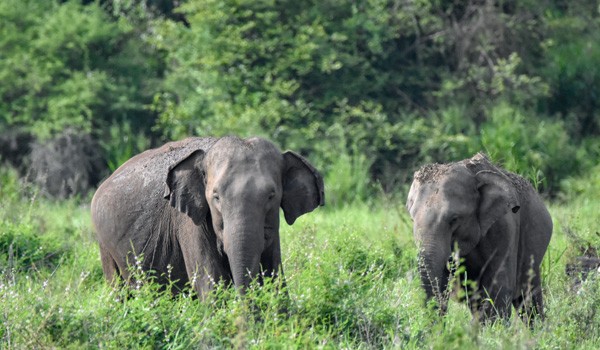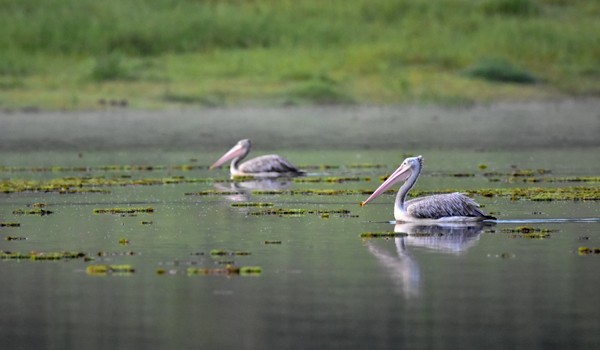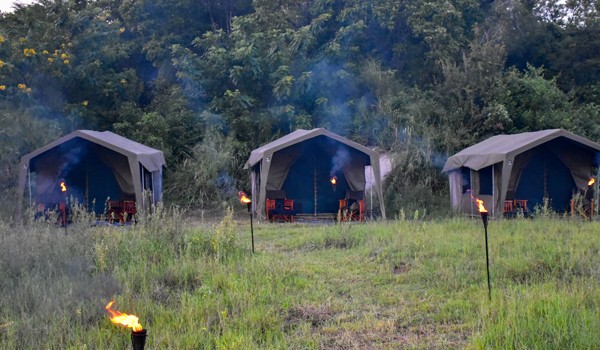Maduru Oya National Park is unknown to most travellers; a treasure to be explored by avid wildlife travellers. Situated north-east of Colombo, just under 300km away, this is a picturesque park with large herds of elephants and diverse birdlife. Surrounded by indigenous communities, Maduru Oya National park is the place to discover undisturbed wildlife and authentic Sri Lanka.
This national park with 58,850 hectares of land acts as the catchment area for Maduru Oya Reservoir along with the intermediate catchment for five other surrounding reservoirs. Fifteen percent of the park consists of water making it picturesque and unique. Shifting cultivation has created a secondary forest consisting of tall grass which is a great hideout for large herds of elephants, almost making them invisible. Woody plants amongst the grasslands creates an interesting landscape. Situated in the dry zone of Sri Lanka, the park receives rainfall during the months November-to-February during north-east monsoons. As the park’s southern boundary is in the intermediary zone, mixed evergreen forests add to the landscape. Maduru Oya National Park was a result of the Mahaweli irrigation project, a project launched to provide water for paddy cultivation across the dry zone. As such it is surrounded by old and new human settlements including the Indigenous Vedda people.

The average temperature here is 27°C with a long, dry spell from March to October. With diverse avifauna, the park is the home to painted storks, grey pelicans, great cormorants, broad-billed roller and spot billed pelicans. It is also the home to Sri Lankan leopard, sloth bear, wild buffaloes, golden jackals, grey langurs, jungle cats, spotted deer and Indian pangolins. The park remains picturesque as a significant area consists of water bodies and long grass. The park is also home to a rare and small fishing community that lives in the midst of it. Seeing them going about in their daily lives and the day’s fresh catch (most part of it transported to the cities) is a unique experience. The park consists of nearly 200 or more elephants. The elephant corridor spreads across the park into human settlements thus creating elements of human/elephant conflicts in this region.

One of the interesting aspects of Maduru Oya National Park is the existence of an ancient sluice gate that was discovered during the construction of the Maduru Oya Dam. It is considered to have been built before the 6th century B.C., revealing the marvels of ancient Sri Lanka. Safaris into the park are few and far between. However, they open a world of excitement for wildlife explorers. Game drives are conducted in jeeps and the vehicles may not be as good as the ones that are available in more frequently visited parks. However, the drivers and the trekkers know the terrain well. Despite tall grasses and woody forests, there is never a dull moment on safari. For the herds of elephants in this park human contact is rare. As such some may be curiously driven to explore the visitors.

The silent water bodies and lakes are the feeding grounds for water birds. Pelicans with submerged heads and protruding bottoms searching for delicacies are some of the amusing sightings that you are likely to come across during the safaris. Morning safaris provide the option to stop at the lake where a small community of fishermen who inhabit the area are found with the morning’s catch. The park has a museum which displays some interesting details and is worthy of a visit during either a morning or an afternoon safari. Safaris in this park generally last 3- 4 hours.

Accommodation is scarce and limited in and around this area. Low-range accommodation options are available outside the park within an hour and a half drive from the park. We prefer the glamping option in the park with comfortable tented accommodation with en suite bathrooms and personalised services including the services of a host/ naturalist. Such accommodation options provide the best opportunity to immerse in the wilderness with best sightings. Maduru Oya National Park is one-and-a-half hours from Polonnaruwa in the Cultural Triangle. It can be easily included into an itinerary between the Cultural Triangle and a stay in Kandy.

Here are sample itineraries for wildlife tours of Sri Lanka featuring Maduru Oya National Park. Click below to read more about safaris in Maduru Oya or get in touch to receive a detailed, tailor-made itinerary.
Discover the best wildlife experiences Sri Lanka h...
17days/16nights
Wildlife of Sri Lanka
Read MoreAmazing trip! We absolutely loved it. Sri Lanka is now a country we would definitely like to go back to and explore further.Thank you so much for all the work you did in putting the trip together for us. It was a great mix of places for us to get a good feel of the country. We will be encouraging all our friends to go to Sri Lanka.